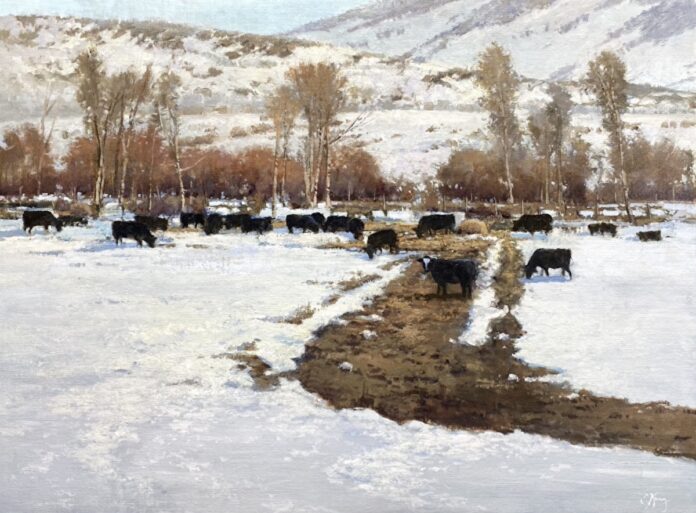A Plein Air Live faculty spotlight on the importance of painting composition, and more
by Laura Vailati
Art enthusiast and Editor at Miami Niche
“To be surrounded by the mountains and all the nature is magical, and that’s why I decided to be a landscape painter instead of a figurative painter,” said artist Shanna Kunz, a masterful interpreter of the landscapes of the American West, in which the human presence is only a scenic presence that pays homage to the perfect majesty of nature which, for the artist is equal to family.
Shanna Kunz will be among the faculty members at Plein Air Live, the online event entirely dedicated to the plein air, taking place this week.

Born and raised in northern Utah, where she lives and where she fell in love with the rich natural landscape that surrounds her, Shanna Kunz has been a stenographer, with a life spent drawing and doing creative projects, sewing, and making her own patterns.
She was 29 years old when she took her first watercolor class, which made her fall head over heels in love. She later took art classes at Utah State University, where she was greatly influenced by the style of the tonal artist George Inness. Today she paints with oils.
“Eventually I decided to go back. I was already doing art exhibitions and selling works, but I felt I needed that foundation,” said the artist.
Her favorite artists also include Winslow Homer and Claude Monet. But it is with the painting of Dwight William Tryon (1849-1925) that she has a special feeling to the point that he represents a kind of spiritual guide for her, “like a little art historian sitting on my shoulder.”

Her love for the outdoors, family camping vacations, and especially her father working as a forestry service, only increased the unbridled desire to paint the lush nature of her land, as the undisputed protagonists of her compositions made by trees, meadows, and hamlets of wooded landscapes, snow-covered and otherwise.
Trees and meadows, with rivers cutting through them or just beautiful soft simple planes, are her favorite subjects. “The trees are my people,” declared the artist, who loves to make personalities out of tree shapes.
Her landscapes are never “big vistas,” but rather they are very intimate and she interprets them as “a tonalist in the heart.”
Her works have a contemporary touch, due probably, to the fact that at the last 10% of the painting composition, she refines the focus in an authentic realistic style. “At the end, I go back to reality just to make sure that it’s believable and that the composition is solid,” she says.

“I like painting outdoors, getting out in nature, taking notes, and painting by observing,” Shanna said.
Her technique is “alla prima” painting and does not rely so much on detailed reality because she is not interested in bringing in all the details in a hyper-realistic way since, “when you get out in the fresh air, there is so much information that you almost become a slave to what is out there.” She said she usually paints many miniatures from observation, with which she establishes the arrangement of shapes and design.
After this step is finished, she returns to the studio and works from the miniatures to larger and more personal projects, working on both small scale – the places she explores for the first time – and large scale – the places she knows perfectly – and takes things out and moves things around, giving emphasis with the final details to the subject that will move the viewer’s eye through the painting.

Shanna’s compositional process begins with the drafting of gesso on Belgian linen. The first step is the drafting of large masses, within which she locates the lights and shadows and in which the color temperature will vary as the painting composition changes, influencing the whole process.
As for colors, she tends to use light and atmospheric colors that she also works with the palette knife, taking care of the effect, thicker or thinner. “I like the dynamics of thin painting versus thick painting,” said the artist.

During her Plein Air live demo session, Shanna will show her painting composition process by demonstrating from a place where her family has gone camping many times. She will share her processes and materials, and her lightweight equipment. Among other recommendations, she will also highlight the importance of taking the time to know the area before jumping into a plein air painting, of walking around absorbing what’s around you, because the most important thing, as she said, is to “be emotionally connected to the landscape.”
The above is part of a series featuring a leader in the art community who will be joining us on the faculty of Plein Air Live, March 6-8, 2024, with an Essential Techniques Day on March 5. Join us and register now at PleinAirLive.com!
And browse more free articles on painting composition and more here at OutdoorPainter.com




